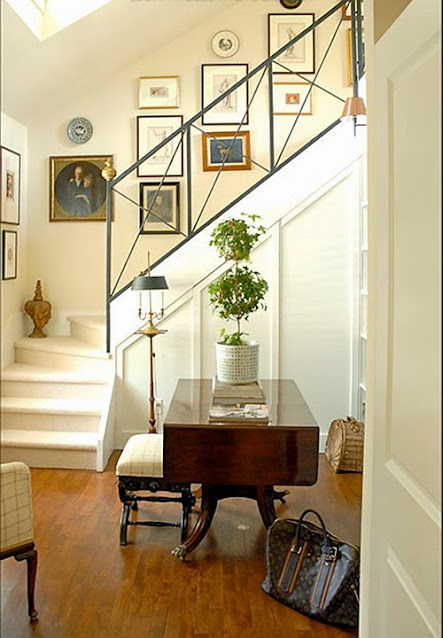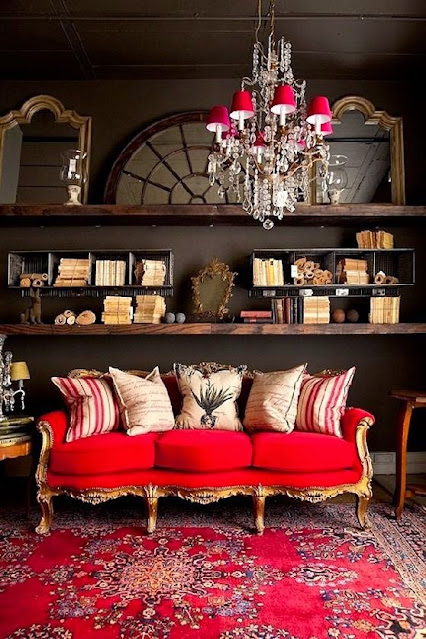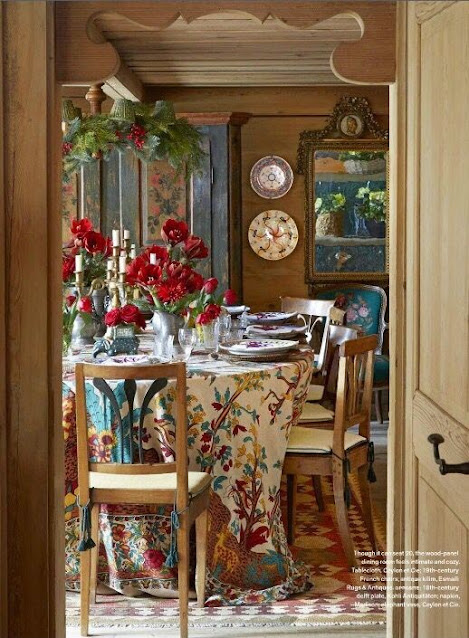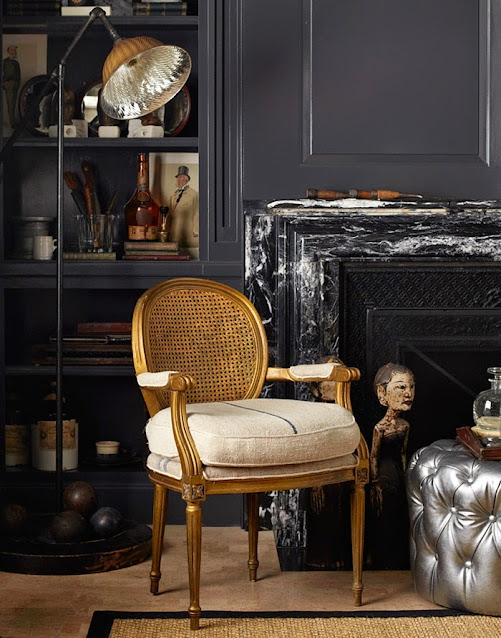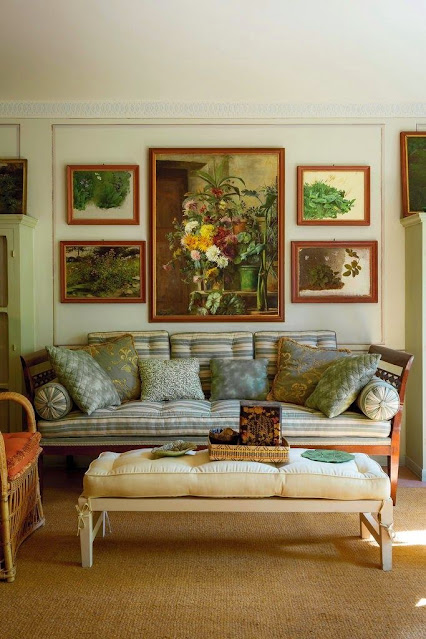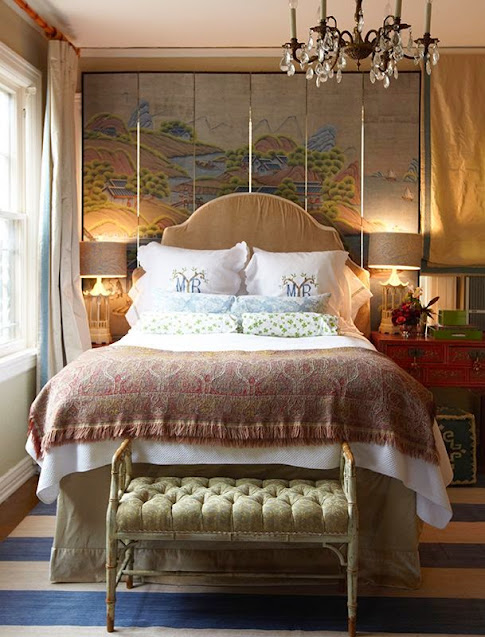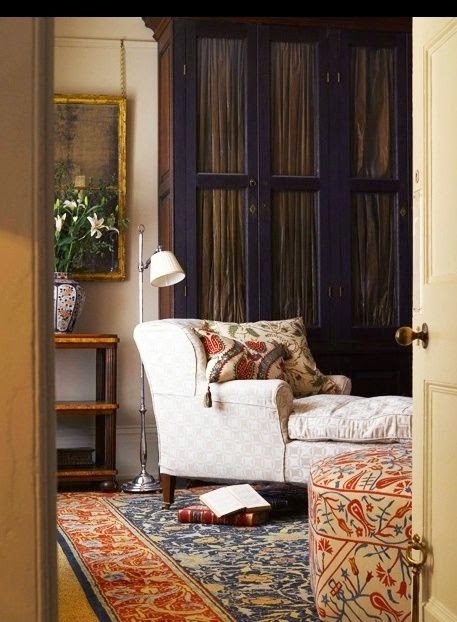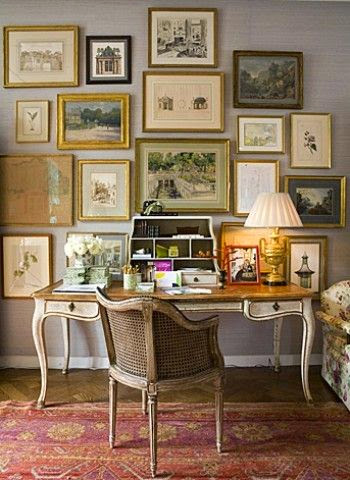A Lifetime of Home Furnishings: Collecting Different Styles and Era’s for a Look That’s Uniquely You
joy of nesting
How do you incorporate a lifetime of collections and furnishings in your home so it looks fresh and original? What do you keep and what do you discard as you go through life? What kinds of things can you add that will unify disparate pieces? How do you utilize something that has sentimental value but doesn’t look great in it’s current finish? I’ve had personal and professional reasons to ponder these things over the years and I think I have a philosophy that works.
I’m including lots of images today, that display great style combinations. Study them, develop your ‘eye’ as we say in the industry. You’ll begin to notice that well designed spaces have the following principles and elements that make them intriguing.
I’m including some simple how to’s and a list of principles and elements below.
Principles and Elements of Design
Line
Color
Scale
Unity
Continuity
Form
Function
Space
Form
Shape
Texture
Light
Balance
Rhythm
Repetition
Emphasis
And my favorite design concepts
Texture
Scale
Greenery
Continuity
Emphasis
Vertical line
A place for the eye to rest.
For an in depth look at the principles and elements of design go to my two part article published August 20, 2014 and August 27, 2014 or simply enter “principles” in the search bar. It will come right up.
Starting out as a young couple, you have few belongings. You
start with the basics. Your home looks simple and clean with few furnishings
and accessories. Your priorities are work, play and taking care of the
children. As years pass, you become more of a nester, adding to the décor or
changing it up over time. People give you things or you inherit them. You
collect a few pieces of artwork, or several. You buy a new sofa, or recover an
old one. You purchase a few new chairs, or a nice dining room table.
start with the basics. Your home looks simple and clean with few furnishings
and accessories. Your priorities are work, play and taking care of the
children. As years pass, you become more of a nester, adding to the décor or
changing it up over time. People give you things or you inherit them. You
collect a few pieces of artwork, or several. You buy a new sofa, or recover an
old one. You purchase a few new chairs, or a nice dining room table.
via CANDYKISSES
As the years go by you continue collecting and here’s where things either go right or wrong. You have a choice to develop your eye and tastes or simply replace everything with the newest, ever cheapening look.
Many designers are guilty of discarding anything old and replacing it with the newest style. It’s much easier and (more profitable) to work that way. But I’m recommending you don’t go that route. There is a time to replace, recover and refinish your furnishings. I like to freshen up my accessories every ten years and my fabrics and finishes every twenty.
When something is really outdated it’s often because it has been overused or wasn’t well designed to begin with. Consider the old sofas with big, rolled arms; faux distressed furniture; Modern Farmhouse; anything Tuscan or French looking (but made in China) generally don’t pass the test of time.
JEAN-LOUIS DENIOT
It’s
not that complicated really, unless you make it so. If something is ugly, if
it’s cheap, if it has no sentimental value, give it away or consign it. If it’s
designed or crafted well, is a keepsake or an heirloom, or is something you
really love, you will find a place for it eventually. But there is a real art to combining furnishings that are of different styles and from different eras. To be fair, very few people do this well. Designers included.
not that complicated really, unless you make it so. If something is ugly, if
it’s cheap, if it has no sentimental value, give it away or consign it. If it’s
designed or crafted well, is a keepsake or an heirloom, or is something you
really love, you will find a place for it eventually. But there is a real art to combining furnishings that are of different styles and from different eras. To be fair, very few people do this well. Designers included.
Coming up are the how to’s listed below but do consider grabbing a talented friend or two to help you with this, unless you have a knack for such things yourself. If you happened to have a particularly talented designer, prepare to spend a few thousand dollars for this job because it’s so labor intensive. My fee for this is around $2,500 depending on the size of the project.
via JONATHAN RACHMAN
Whatever
era, hand crafted furniture is very desirable and
if you’ve been wise enough to purchase or lucky enough to inherit pieces like
these, keep them. If they don’t work with your living room décor, put them to
work in a spare room with the knowledge that a better space will open up for
them at some point.
era, hand crafted furniture is very desirable and
if you’ve been wise enough to purchase or lucky enough to inherit pieces like
these, keep them. If they don’t work with your living room décor, put them to
work in a spare room with the knowledge that a better space will open up for
them at some point.
How to’s
Use unifying elements like lamps, paint, pillows and other fabrics to incorporate the furniture styles you have and to pull everything together in a cohesive design scheme.
If something isn’t well designed or well made, has no sentimental value, or isn’t working in your home, give it to the thrift store.
If something is good quality, but outdated try moving it around from room to room first. If it still doesn’t resonate with you on any level, consign it or give it away to a needy college student. Let someone else have it who will appreciate it.
It takes years, often decades, to put together an evolved, well accoutered home. Don’t discard something just because you feel it’s old or outdated. Sometimes those oddball pieces make a home’s décor unique.
BUNNY MELLON
In my own home, I’ve inherited many things I
treasure and a few I’ve stored away in the garage for my son Christian when he
has his own home. One was his great, great grandmother’s mission style rocking
chair given to me by my paternal grandfather when Christian was born. Another
is a red leather rocking chair from his father’s bachelor pad, before we met.
In the master bedroom I have a vintage dressing table that came with
the house. Initially, I’d planned to get rid of it but now I love it.
treasure and a few I’ve stored away in the garage for my son Christian when he
has his own home. One was his great, great grandmother’s mission style rocking
chair given to me by my paternal grandfather when Christian was born. Another
is a red leather rocking chair from his father’s bachelor pad, before we met.
In the master bedroom I have a vintage dressing table that came with
the house. Initially, I’d planned to get rid of it but now I love it.
via EMILY FOLLOWILL
Then there’s the bird’s eye maple tall boy
dresser that I painted black because it didn’t go well with the wood
floors. It’s a quality piece and eventually it will be refinished properly. It
works fine for now. Because I’ve been loath to discard anything that’s wood, I also
have some fun, mismatched tables and dressers around the house.
CHARLOTTE MOSS
In
David’s den we incorporated several things including my favorite pair of
black Edwardian “étagère” bookcases that I purchased from my old design store,
S.S. Home; a small black secretary/desk that was in my step grandparents’ home
now being used as a laptop work place; an antique lyre back Larson chair with a
custom skirted seat pad to match the draperies; a matching slipcovered cabinet,
incredibly ugly in its former life that now houses extra guest bedding; sheer,
floor length curtains from David’s old living room, which fits under
my existing custom valances and stationery curtain panels, his brilliant idea.
David’s den we incorporated several things including my favorite pair of
black Edwardian “étagère” bookcases that I purchased from my old design store,
S.S. Home; a small black secretary/desk that was in my step grandparents’ home
now being used as a laptop work place; an antique lyre back Larson chair with a
custom skirted seat pad to match the draperies; a matching slipcovered cabinet,
incredibly ugly in its former life that now houses extra guest bedding; sheer,
floor length curtains from David’s old living room, which fits under
my existing custom valances and stationery curtain panels, his brilliant idea.
There is a round, rattan end table with a removable tray top, formerly in my living
room; a vintage Chinese red lacquered stool that he uses for drinks, found at a
local thrift shop; and his television, TV stand and newly purchased, loveseat
hide-a-bed for overnight guests. The loveseat’s coordinating brownish-green
fabric looks so handsome with the room’s existing green walls and green floral
window treatments and matching lumbar pillows.
room; a vintage Chinese red lacquered stool that he uses for drinks, found at a
local thrift shop; and his television, TV stand and newly purchased, loveseat
hide-a-bed for overnight guests. The loveseat’s coordinating brownish-green
fabric looks so handsome with the room’s existing green walls and green floral
window treatments and matching lumbar pillows.
MEGAN RICE YAGER
Collecting really boils down to knowing your style and knowing what not to discard. A good rule of thumb is if there is a piece you really love, use it as the catalyst for your next design project.
That’s it for today! If you found this post helpful, I have a few digital books that really go into detail about designing a home and a life you love. They are all free and you can find them on my website shireesegerstrom.com. I will also leave you with my premier download Healthy at Home: 5 Key Design Decisions That Promote Health and Wellness.
Bye for now!
via SPLENDID SASS
via PERIWINKLE


